|
L-R: MEXT Scholarship winner Anastasia Ramjag stands with Ambassador Hirayama and MEXT Scholarship winner Avinash Boodoo. Photo: Embassy of Japan in Trinidad and Tobago. wo Trinidadian students have been awarded the MEXT (Monbu-Kagaku-Sho) Scholarship to pursue their graduate studies in Japan.
In a statement, the Embassy of Japan in Trinidad and Tobago said the two students will pursue their studies at graduate level for two years - Anastasia Ramjag will be undertaking studies in Linguistics and Intercultural Communication at Waseda University and Avinash Boodoo will be pursuing studies in Coastal Engineering at the Tokyo Institute of Technology. The Embassy said both students are excited to start their studies in Japan, though their original departure schedules were delayed due to the COVID-19 pandemic, and are looking forward to immersing themselves in the culture while furthering their educational goals. On October 7, Ambassador Hirayama met with and congratulated both MEXT Scholarship students at his official residence. During their meeting, they discussed the courses that the students will be pursuing, the Universities and areas of interest to be explored in japan. Ambassador also offered the students encouraging advice and useful information for their stay in Japan. The Government of Japan, through the Ministry of Education, Culture, Sports, Science and Technology, also known as MEXT or Monbu-Kagaku-Shō, offers scholarships to foreign students who desire to study at Japanese universities as postgraduate/research students every academic year. Successful applicants receive round-trip airfare, exemption from school fees and a monthly allowance. The Embassy said the MEXT Scholarship Programme offers students an opportunity for exchange, growth, exploration and educational development. "The Embassy of Japan in Trinidad and Tobago is pleased to state that the programme has contributed to the established bilateral relations between Japan and Trinidad and Tobago and has further strengthened the cooperative relationship and exchanges between the two countries." For more information visit the Embassy of Japan Website for more information on the MEXT Scholarship Programme and daily activities: https://www.tt.emb-japan.go.jp/itprtop_en/index.html (Source: Loop, October 8, 2021)
0 Comments
Did you know that there’s a frog that’s found only in Trinidad and nowhere else in the world?
Herpetologist Renoir Auguste wants you to learn more about the Trinidad stream frog (Mannophryne trinitatis). Scientists once believed these frogs were also found in Venezuela. But genetic work done over 20 years ago proved they were not, which made them Trinidad’s only endemic frog species. Auguste told Newsday Kids, “The Trinidad stream frog actually lives near streams which is how it would have gotten its common name. But it’s only found in the streams in the northern and central ranges of Trinidad.” If you’re wondering why these frogs are only found there, Auguste explained that they prefer cool temperatures and high elevations. So that’s why you tend to find them in the cool, hilly ranges. While it’s estimated that there are hundreds of thousands of these frogs in the wild you may not see one that easily because of their size. On average they grow no larger than three centimetres. However, while it may not be that easy to see one there’s a good chance you will hear a male making his mating call. Auguste explained, “If you are one of those people who are hiking in the Northern Range chances are you may hear their 'peep' call while crossing a stream, because they call during the day. “Most frogs in Trinidad call at night but this particular frog calls during the day which may just be another case of evolution. Because they live in a cooler climate at a higher elevation it means they can actually be out during the day, whereas in a low-lying area it’ll be hotter during the day which they won’t be able to tolerate.” While both male and female frogs are various hues of brown, females are distinguished by their yellow throats. When it comes to parenting, there’s a way these frogs distinguish themselves too. “One of the interesting things about this frog is that the male actually takes care of the young. “So when the male and the female mate, the female lays the eggs in a little clutch under leaves and the male guards them. “When the eggs hatch as tadpoles they actually hitch a ride on the father’s back and he will then take those tadpoles to a stream where they can develop and grow.” While the males care for the young the females go about finding another mate. Given they are only found in Trinidad, it’s important that these frogs are protected as much as possible. When the International Union for Conservation of Nature (IUCN) first assessed the status of these frogs in 2004, they were classified as vulnerable. However, research done by Auguste and his colleagues found they had a healthy population, which led to their reclassification in 2020. “Based on the calculated estimations there are probably millions of these frogs here in Trinidad. “So because of that, their IUCN was downgraded from 'vulnerable' to 'least concern'…so right now they are not endangered in Trinidad.” Like most frogs, these frogs feed on small insects like mosquitoes and flies which helps to keep the population of these insects in check. Hence they play an important role in ecosystems. (Source: Newsday, Oct 10) RAMJOHN, MANNIE
BIOGRAPHY Born November 15, 1915; died January 23, 1998. Mannie Ramjohn, the country boy from Gasparillo who ran barefooted and even competed internationally without running shoes, gave T&T's its first ever gold medal in 1946 when he won the 5,000 meters final at the 1946 Central American and Caribbean Games in Baranquilla, Colombia. As the story goes, three Mexicans and two Guatemalans faced the starter alongside Ramjohn. TheMexicans, who had the benefit of training at high altitude, were expected to sweep the field. However, exactly 15 minutes and 54.8 seconds later in what was a new record for the distance, Ramjohn created history when he edged Mexico’s Jesus Borgonio by a mere 0.2 seconds in a blistering sprint to the wire. Two years later in 1948 he was one of five athletes at T&T's first showing at the Olympic Games at the Wembley Stadium where he competed in both the 5,000 and the 10,000 metres although he only made it to the final in the longer distance. Mannie was a country boy, born and bred in the village of Gasparillo and had an impressive career track record of 96 victories, 40 second-place and 13 third-place finishes from the meets he entered between 1936 and 1951. The father of six boys and one girl also had a passion for scouting and joined the Fifth Naparima Boy Scout Group where he eventually became King Scout and Patrol Leader. To mind his family, Mannie Ramjohn worked as a senior research laboratory technician at Texaco. In 1982 he was awarded the Hummingbird Silver Medal for his contribution to sports and social work and he died at the age of 82 years in 1998. Ramjohn's career included the following significant accomplishments: 1939 White City Games, London, England - 1 mile; 3 miles 1946 Central American and Caribbean Games, Barranquilla, Colombia - 5,000 meters (1st, 15:54. 1948 Olympics, London, England - 5,000 meters; 10,000 meters (Did not finish) Awards 1948 - Wood Badge, The Scout Association of the United Kingdom 1973 - Medal of Merit, The Scout Association of Trinidad and Tobago 1979 - Silver Ibis Award for meritorious service, The Scout Association of Trinidad and Tobago 1980 - Silver Platter 50-Year Award, Point-a-Pierre District Scouts Association 1982 - Trinidad and Tobago Humming Bird Medal Silver for Social Work and Sport Courtesy Caribbean Memory Project. (source: Virtual Museum of T&T, Oct 6, 2021) TTO OLYMPIC cyclist Teniel Campbell on Monday captured stage six of the Tour de l’Ardeche while representing the Women’s World Team BikeExchange, her first victory since joining the Australia-based team.
Incredibly, the 23-year-old did so on a borrowed bike after her bike and 11 others, all belonging to Team BikeExchange, were stolen on the morning of the fifth stage. The race was initially at risk but for rival competitors coming to the rescue by sharing spare equipment. Campbell finished the 138km race in three hours, 33 minutes and 58 seconds, in a 12-competitor breakaway sprint, ahead of runner-up Nina Kessler (TIBCO-Silicon Valley Bank) and Lauretta Hansono (Trek-Segafredo). Campbell also escaped a crash on the final stretch and was faster than Kessler and Hansono in the sprint. Campbell was later quoted on the team’s website, saying, “It’s extremely special to win today in so many ways. After what transpired with the bikes yesterday, how everyone kept calm and found solutions instead of freaking out. How everyone remained motivated throughout what seemed at first chaotic! Is completely unreal. “It was a complete team effort from the chef keeping our tummies happy to the staff working tirelessly last night to prepare the bikes, to my team-mates chasing the breakaway to help me launch on away on a 700m climb over to the breakaway. “It hurt like hell but the trust from the team and how well we were working these last days really motivated me and gave me a drive and strong urge to get a stage victory here,” she said. “Each day we came with a plan to give each other opportunities, constantly backing each other. “From the start of today the adrenaline and motivation amongst us was really high so I believe everything just transcended and there was an energy flow. She said she will cherish her first win and remember it for a long time. Speaking with Newsday following her win on Monday, former national cyclist and four-time Olympian Gene Samuel, lauded Campbell for her aggressiveness and strength to win, especially doing so on an unfamiliar bike. “She was not just sitting down in the race–she was attacking them, attacking them, trying to get away. It is commendable all the way through. Samuel also thanked the clubs and their athletes for selflessly sharing their equipment with the BikeExchange cyclists. “That is the camaraderie outside in the world that we do not have in Trinidad. Some of them (opponents) jeopardising their own continuation in the race and that is commendable. I would like to say a special thank you to all of those who loaned them their bikes. “What’s even more commendable is that she raced on a different bike. Riding a different bike for five or 15 miles, far less for 100-plus miles, is commendable, a fantastic achievement today.” The Tour de l’Ardèche will end on Tuesday, five days ahead of the World Road Cycling Championships, which take place in Belgium. It has been an impressively successful week for the Campbell family after her brother, Akil Campbell, won gold in track cycling on Friday night in the men’s elimination race at the UCI Tissot Track Cycling Nations Cup. This story has been adjusted to include additional details. See original post below. AFTER having her bike stolen overnight, Trinidad and Tobago Olympic cyclist Teniel Campbell captured gold during stage six of the Tour de l’Ardeche in Belgium on Monday using equipment she borrowed. She represented the Women's World Team BikeExchange, earning her first victory since joining the Australia-based team. Campbell finished the 138km race in three hours, 33 minutes and 58 seconds, in a 12-competitor breakaway sprint, ahead of runner-up Nina Kessler (TIBCO-Silicon Valley Bank) and Lauretta Hansono (Trek-Segafredo). But officials confirmed to Newsday that a number of the club's riders awoke on the morning of stage five to find 12 of their bikes had been stolen, putting their race at risk. Fortunately, a number of rival competitors came to the rescue by sharing spare equipment. Campbell escaped a crash on the final stretch and was faster than Kessler and Hanson in the sprint. The Tour de l'Ardèche will end on Tuesday, five days ahead of the World Road Cycling Championships, which take place in Belgium. It has otherwise been an impressively successful week for the Campbell family after her brother, Akil Campbell, won gold in track cycling on Friday night in the men's elimination race at the UCI Tissot Track Cycling Nations Cup. (Source: Newsday, September 13, 2021) RECOGNIZING THE SIGNIFICANT CONTRIBUTION THE CHINESE COMMUNITY MADE TO THE DEVELOPMENT OF T &T10/8/2021 KAPOK HOTEL - THE CHAN FAMILY SAGA
Credit to T & T China Times for submission of this article. The Kapok Hotel, located in Trinidad’s capital city of Port-of-Spain, is a nine-storey modern-style building boasting 94 guest rooms, an elegant café and two top-class restaurants. Quite apart from its comfortable rooms, attentive service and delicious food and beverages, its top floor offers a breathtaking view of the Queen’s Park Savannah, the National Botanic Gardens and the embassy district. All this makes the Kapok Hotel the accommodation of choice for political dignitaries and business moguls, among other visitors to Port-of-Spain. Famous guests at the hotel have included Derek Walcott, Raul Castro and Hugo Chavez. Newcomers to the hotel, however, might not know that behind all this lies a saga of struggle and hard work by two successive generations of the same Chinese family. The Beauty and the Scholar of the Chinese Theatre Group Mrs. Ena Chan, née Yang, was born in Trinidad in 1930, to a family originally hailing from Hokshan County in Guangdong Province, China. At the age of two she was sent back to China by her parents. As she came from a well-off family, Mrs. Chan received a very good education, starting from a young age. She attended primary school in Macao, and afterwards attended the prestigious Peidao Girls’ Secondary School in Guangzhou. In 1948 she returned again to Trinidad, and helped to manage the department store her father had opened. To young people, the chores of working in a department store can seem exceedingly dry and dull, and neither Mrs. Chan nor her younger brother really enjoyed this sort of work. Her younger brother eventually left for the United Kingdom to study medicine, and after graduation he returned to China and worked at one of Sun Yat-Sen University’s affiliated hospitals in Guangzhou as a prominent orthopaedic surgeon. Mrs. Chan, on the other hand, together with a dozen or so like-minded young Chinese, organized a small Chinese theatre group. After a day’s work they would gather together to rehearse a play. Some of them acted as directors, while others were actors. Thus, on this small tropical island thousands of miles from China, they created a cultural sphere that was all their own. During rehearsals for their play, Mrs. Chan gradually got to know a fellow member of the troupe: a young Chinese man who would later become her lifelong partner and the founder of the Kapok Hotel— Mr. Godfrey Chan. Godfrey Chan was older than Ena by two years and, like her, had been born in Trinidad, but returned to China at a young age to pursue his schooling there. When the Second World War broke out and Guangzhou was occupied by the Japanese army, he headed towards Guilin, passing through many places on his way, and attended National Southwestern Associated University, which at the time had retreated to Guilin. After the war was over, Godfrey Chan eventually arrived back in Trinidad. “He wasn’t very tall, but he was very good-looking and smart, with handsome heavy features. And he treated me really well.” When Mrs. Chan recalls her first meeting with her husband sixty years ago, her face still reveals a look of knowing happiness. “He was a very good person; always willing to help others. He’d often help out people who were poor or going through difficulties. The only thing was he could have an impatient temper.” At the time when Godfrey and Ena Chan were getting to know each other in the theatre group, Mr. Chan was by no means well-to-do, and didn’t have his own business; rather, he was a Chinese language teacher. “Because he’d had a very good education and could speak Mandarin and Cantonese as well as English, he was hired by the Embassy of the Republic of China, which had an opening for a Chinese teacher,” Mrs. Chan recalls. “He taught Chinese for free to children twelve years old and under, sons and daughters of Chinese immigrants. He’d get $37.50 a month for teaching Chinese, which was no small amount. Back then the Chinese Embassy was located where the US Embassy is now. They arranged a little house for him to live in, not far from there; we lived in that house for a long time after we got married. The Embassy even provided him with a car, but it was old and falling apart. It used to break down on the road all the time. One time it even caught fire.” In the end, the play never opened due to financial troubles; nevertheless, the sparks of romance between the beauty and the scholar of the Chinese theatre group kept growing into a roaring flame. In 1950, after having known each other for one year, the two were married. They were to remain companions for life. Beaten but not broken: Mr. Chan’s first “pot of gold” The couple were not to remain a Chinese teacher and a theatre actress for long, however. In 1949, after the Chinese Nationalist government’s defeat by the Communist Party, the Embassy was forced by financial difficulties to eliminate the position of Chinese language teacher. Mr. Chan was thus “downsized”. In order to support his family, the newly married Mr. Chan set off alone for Venezuela to work. After about a year he returned to Trinidad and, with the money he’d scraped together from his work abroad, opened a small grocery store. Unfortunately, due to his lack of experience, his shop closed down in less than a year. For a time after this, Mr. and Mrs. Chan turned the yards around their house into a vegetable garden, and lived a pastoral life of planting and selling produce. As romantic as this might sound, one can still imagine how hard such a life was for the young couple. In fact, Mrs. Chan’s father’s business was doing quite well in Trinidad, and the family’s economic situation was very good. But the young husband and wife had to rely on their own diligent efforts to find an opportunity to build their own future. After several unsuccessful attempts at starting a small business, Mr. Chan’s relentless perseverance finally began to show results. In the 1960s, as he was setting up a general store in South Trinidad, an oilfield and oil refinery opened up nearby, and a large number of oil company workers from overseas arrived, bringing Mr. Chan’s business a remarkable increase in income. Because of his honest management and good service, the oil company came to trust him, and gradually he became the main supplier of general goods for the staff. “At the time there were some oil drilling platforms in the sea there, and the offshore staff that worked there had to have their general goods delivered to them by helicopter, and all of these goods were purchased from Mr. Chan’s store,” recalls Mrs. Chan. And so in a few years, Mr. Chan, through his unceasing hard work, had won himself his first ‘pot of gold’. A DISCERNING EYE: LAYING THE FOUNDATIONS OF THE KAPOK HOTEL As Mr. Chan was laboring tirelessly to set up his business, Mrs. Chan not only played the role of the good wife; having a unique business insight of her own, she took a fancy to a plot of land not far from their home. This plot was located in St. Clair, which in the 1960s was nowhere near as densely populated with embassies and diplomatic missions as it is today, but was a remote, out-of-the-way place. Most businessmen had their eyes fixed on the old city centre of Port-of-Spain, and very few people paid attention to St. Clair. But Mrs. Chan saw that this place was not only close to the Queen’s Park Savannah, it was also necessary to pass through it on the way between Maraval and the capital. At the time three bus routes all had stops at this area. Because of this, she believed the area had great potential for development. This plot of land that Mrs. Chan had selected was the location where the Kapok Hotel now stands. At the time, the whole area of land belonged to three separate private residences. When Mrs. Chan brought up wanting to purchase these three residences and use the land for property development, a lot of people expressed doubts at this choice. Mr. Chan, however, firmly trusted his wife’s judgement. “Just say what land you think is good, and we’ll buy it!” Luckily, in the next three years, the owners of all three residences agreed one after the other to sell their homes and land, and Mrs. Chan bought them one by one. Although the price they paid for them back then was not really very high, they still had to rely on loans to be able to afford them. Their confidence in the development potential of that plot of land gave Mr. And Mrs. Chan the courage to borrow money and invest in it. Mr. and Mrs. Chan’s original idea after having bought the land was to have the residences demolished, and then put up an apartment building so they could rent out the units. However, it was at that same time that the government of the day was trying to promote tourism development. The Chans were told that if they were willing to invest in building a hotel on that land instead, they could be given a ten-year tax break as an incentive. This attractive offer appealed to the Chans, and in the end they decided to give up their original intention of constructing an apartment building, and instead borrowed more funding to invest in opening a hotel. However, Mr. and Mrs. Chan, having no experience in this area, knew nothing about how to set up and run a hotel. It was for this reason that the two took a special-purpose trip to Taiwan, Thailand and other faraway destinations, to observe and study in detail how hotels in those places were designed and run. After careful preparations, a seven-storey modern hotel was erected on the plot of land that Mrs. Chan had bought, and by 1970 was officially opened for business. Because the stop along the bus route had been called Cotton Hill, and also because the silk cotton tree was common in their old home in Guangdong Province, Mr. and Mrs. Chan chose the name “Kapok Hotel”, from the Malay word for silk cotton tree. In the beginning, the number of people employed at the hotel was very small. Even Mr. Chan himself would have to help guests with their luggage in the lobby, while his three daughters worked part time as waitresses in the restaurant. Through the Chan family’s diligence and superb management, coupled with the hotel’s advantageous location and high-quality accommodation, the Kapok Hotel quickly grew to become one of the ‘big three’ hotels in Port-of-Spain, on par with the Hilton and the Hyatt. Helping the Chinese Embassy choose a site Although they had already been away from China for several decades and their business in Trinidad was booming, Mr. and Mrs. Chan, their relationship with their motherland was far from over. Mr. Chan would always enthusiastically lend his full support and assistance in anything involving Chinese people. In the 1960s, he held the position of President of the China Society of Trinidad and Tobago. At the beginning of the 1970s, the government of China began to hold preparatory talks with the government of Trinidad and Tobago concerning the official establishment of diplomatic ties. According to Mrs. Chan’s recollection, the first person despatched by the government of China to Trinidad and Tobago to begin preparations for setting up a Chinese Embassy was a diplomatic representative surnamed Yang. “Mr. Yang stayed at the Kapok for over a year, and Mr. Chan enthusiastically did his best to help him with all sorts of preparatory work. Because we’d lived near the embassy district of St. Clair for so many years, we were very familiar with the area, and Mr. Chan actively assisted in finding a location for the construction of the Chinese Embassy. The place they chose in the end is the same place where the Chinese Embassy still stands today; it was Mr. Chan who showed Mr. Yang that location. He always felt very honoured to have been able to make that modest contribution to diplomatic ties between China and Trinidad.” In 1974, after the two countries had officially established relations, Mr. Chan offered highly discounted accommodations to the first few waves of Embassy workers to come to Trinidad from China. Thereafter, many high-level Chinese political leaders, a Chinese table tennis team, and the national basketball team all came to Trinidad and stayed at the Kapok Hotel, where they were received warmly by Mr. Chan. 45 YEARS OF QUALITY SERVICE During the process of the Kapok Hotel’s development, the management was met with many difficulties. National crises of public security and riots, and the subsequent curfews imposed by the government, damaged business and tourism in Trinidad and Tobago; the US Department of State even classified Trinidad and Tobago as a high-risk area, and issued a warning to tourists to avoid the islands. This caused the number of guests at the Kapok Hotel to plummet. And in 1994, Mr. Chan and his eldest daughter both sadly passed away due to illness. The loss of their helmsman dealt the heaviest blow yet to both the business and the family. In order to safeguard the continued development of the enterprise Mr. Chan had struggled bitterly for years to start, their second daughter, who had been studying commerce in the United States, decided to return to Trinidad. So Mrs. Chan and her two daughters together took upon themselves the arduous task of hotel management. Thanks to the efforts of these three “woman generals”, not only did the Kapok Hotel not decline after the loss of its founder, it actually expanded greatly. At its highest point the hotel employed about 200 members of staff, and the Chinese restaurant that was added on the top floor has become one of the top Chinese restaurants in Port-of-Spain. Ena Chan was eighty-five years old and has long since retired from the hotel management business, which has been taken over by her second and third daughters when this article was written last year ( see photo below) Speaking about her experience of managing the Kapok over the years, Mrs. Chan said that good staff and good teamwork have been essential to the hotel’s development. “As a proprietor of a business, you have to be kind,” Mrs. Chan expressed. “Whether it’s to your staff or to your guests, you have to be equally kind. In life Mr. Chan always kept that Chinese friendliness and politeness. He was always approachable and sincere. It’s already been over forty years since the hotel opened; a lot of the workers there have been at the hotel all their working life. The main reason they can be so loyal to it is that working there makes them feel like family. Everyone works together as one, and that is why the Kapok Hotel can keep becoming better and better.” Asked about her ties with China nowadays, Mrs. Chan expressed that around 1975, just after the establishment of China-Trinidad diplomatic relations, the Chinese government had wanted to commend Mr. Chan for his contributions towards the two nations’ preparatory diplomatic work, and had invited their entire family to return to China for a study trip. After this, she returned to China quite often. These days, although advancing in age, she still wishes to take her grandchildren to China to see the sights, and allow the younger generation to deepen their understanding of China. On the development of Chinese people in Trinidad and Tobago, Mrs. Chan said she is happy to see that more and more co-operation is taking place between China and Trinidad, and that the position of Chinese people in Trinidad and Tobago in recent years has seen a great improvement. At the same time she expressed her wish that Chinese people in Trinidad and Tobago would interact more closely with different groups in society and get to know Trinbagonian culture better. This, to her, is the way to become better integrated into local society, help Chinese businesses to develop, and contribute to Trinidad and Tobago as a nation. Interview:Zhang Zhuo English Translation: Meghan Ghent (Special acknowledgements to Mr. Dou Jianzhong for his assistance with this interview and article.) (Source: Virtual Museum of T&T, Oct 7, 2021) Located in the Tobago Plantations Estate (Lowlands), the Boardwalk takes you on a magical walk through dense mangroves where you can see various birds, crabs and maybe even a caiman or two. The mangroves stretch all the way to Petit Trou lagoon on the Atlantic side of the island. (Source: Virtual Museum of TT, Sept 27, 2021) Al Ramsawack once told me an anecdote. He said that he was asked to speak at a national event in Port of Spain. Waiting behind the stage, before he went outside to face the crowd, in his characteristic humility he wondered what he was doing there “between all the big shots,” what on earth he could tell this large crowd. He asked himself, “why would all these people listen to a guy like me?” Still, he went outside and told the audience about Anancy. “At the end,” he said, “I had the whole audience bawling and reeling with laughter. Who would have thought that folklore could delight such a large audience?” Al’s career held many surprises. He was born in Sangre Grande on 25 August 1932. Growing up close to a cocoa estate, he was fascinated by the estate workers’ conversations, whom he described as his first storytellers. Because his parents moved places several times when he was still young, he was schooled late and initially had to sit at the back of the class. Yet by the end of the year, he recalled having advanced to the middle of the class. Al often joked about these experiences, admitting how little expectations he initially had, how unpredictable life had been and how surprising his achievements appeared to him. Learning at school about the life of Charles Dickens, he had for the first time the idea that he might also become a writer one day, only to then shrug it off as wishful thinking. Before he became a writer, Al worked as a school teacher, teaching art at government schools for many years. When he initially told his colleagues that he thought about collecting Anancy stories, they laughed at him, saying: “Anancy story? You yourself look like Anancy, yes!” But he was not dissuaded. On the contrary, he used his spare time to collect folklore stories all over Trinidad, at wakes, bongo dances and from villagers in rural communities. Initially, he collected these stories in order to tell them to his daughter Ann Marie and later his son Stanley. Eventually, he published hundreds of folklore and fictional stories in newspaper articles, in ten books, numerous radio broadcasts and television features. Most people probably know him as the writer, producer and host of Cross Country, a television show exploring Trinidad and Tobago’s flora and fauna. For this extensive work spanning over five decades, he received numerous awards, including the San Fernando Arts Council Award, the Media Award and the President’s Humming Bird Silver Medal. The last newspaper series he wrote was entitled “Preserving Our Natural Heritage” and published in the Trinidad Guardian. In this weekly publication, Ramsawack again documented the flora and fauna of Trinidad and Tobago. In the first issue, he explained that the series served as “a re-awakening to our readers to the simple beauty and wonders of nature; an escape from the stress and depression and into the reality that we share a common balance with the natural world around us.” Al’s achievement was not only to recognise, describe, draw and paint about Trinidad and Tobago’s folklore, flora and fauna, but also to give it back to the people through his features, publications and artworks. Throughout his life, Al continuously paid close attention to and shed light on the things society was about to forget, its folklore, its environment and culture. On Saturday, 26 September 2021, Al Ramsawack died at the age of 89, leaving behind his daughter Anne Marie Samsoondar, his son in law Dion Samsoondar and granddaughter Sadie Samsoondar. Now it is on us to remember the rich heritage of Trinidad and Tobago, including one of the nation’s brilliant sons, Al Ramsawack. (Source: Virtual Museum of TT, Sept 30, 2021) EVERY TRINI KNOWS THE LOCAL EXPRESSION "BAD JOHN"
USE: Yuh feel yuh is ah fo..ing BAJOHN ahwa? Bad John is a synonym for a person who is a general miscreant and trouble maker, well HERE IS THE REAL BAD JOHN. This rare photo shows the Port Of Spain street dweller who bore the name. He was an elderly Afro-Trinidadian man, who dressed in a cast off top hat and jacket. He was a bit mad, or perhaps a sociopath, being known for his sometimes erratic and rarely violent behaviour . He was mostly a figure of public merriment and ridicule. Word had it that Bad John was a man who had been jilted by a lover and had gone mad. He was a fixture of Port Of Spain life well into the 1920s , along with Mahalle in the 30s and early 1940s ,a crazy Indian who walked rapidly, making all the motions of driving a car ( changing gear, steering, pressing brakes etc.) and Bullinder, a tall, muscular drag queen. Gene Wilkes also mentioned a local character called Chancellor to Angelo whom he heard about as a youngster growing up in San Fernando. Chancellor " d trumpet man ",according to oral stories told about this local character was an excellent trumpeter who actually played in night clubs and bistros in Paris, France. He apparently had a successful career , and used to send home lots of money for his wife. On returning home one time, however, he discovered that she had flown the coop with another man and all his money. That was what sent him off we were told. Library corner used to be his concert hall from then on. It is believed that Chancellor was that he was killed by another vagrant after an argument one day by Library Corner, San Fernando. People like these colorful characters do not die....they simply fade away if their stories are not told. Source: Virtual Museum of TT, Sept. 18, 2021 To find out more about the origin of name Bad John copy and paste the URL below into your browser. ( Due credit given to Kim Johnson for story cited in the link ) https://www.google.com/url?sa=t&source=web&rct=j&url=https://waltieainsworth.wordpress.com/2013/12/13/the-badjohn-a-slice-of-tt-history/amp/&ved=2ahUKEwi308Sk-rLkAhWRv1kKHSWoDPQQFjAIegQIBxAB&usg=AOvVaw0-269VZtj9FOchaRVA5vEU&cf= Historic Proclamation Ceremony today. For the first time in Ottawa, October is being recognized as Caribbean Heritshe Month Thank you Honourable Jim Watson for hosting the West Indian Youth Association Of Ottawa and personally delivering and reading the Proclamation!
 Prime Minister Dr Keith Rowley says the world is being reshaped by technology and T&T must figure out how to keep up in order to survive. In his Republic Day message, the Prime Minister said according to predictions, every aspect of human activity in the world will be reshaped in the coming decade. He urged citizens to shift their outlook from “Me to Us.” “What is required now is that we take a deeper look at the world of the 21st century, with the realisation that some of our present socio-economic and political perspectives are unsuited to the challenges that are emerging,” Rowley said. He said one of the troubling questions facing governments around the world was how to prevent a fallout in the job market, how to create sustainable jobs and what happens if losses outstrip job creation. “As our Republic goes forward, this is just one of the many serious considerations which should be in the minds of citizens, because we have to ensure that we are a people, not of unskilled labour, but a people thrusting forward, learning new skills; a people, who, overall, cannot afford to be on the wrong side of this century’s technological divide,” he said. The Prime Minister also acknowledged the “sad, dark side” of T&T—including crime, social ills, drug abuse, unemployment and the lasting psycho-social effects of the pandemic. “The past year has been difficult for all of us. We have had to deal with both the effects of the pandemic and the fall in energy prices, which have meant a reduction in revenue,” he said. But he said citizens should also be grateful for the positives—including the reopening of the economy and a return to our way of life through vaccination. “Recently, I said that God is on our side, and we needed to be on His side too. Earlier this week, he showed how much he was on our side with the announcement by bpTT that it had begun production from its Matapal gas project, much earlier than expected.” He said this project is expected to produce between 250-350 million standard cubic feet per day - just about half of what the company produced on average over the past ten years. “Whilst this does not solve our gas problems, every little bit helps,” he added. The Prime Minister also cited the new $500 million Marriott hotel project for Tobago, saying it would assist in solving Tobago’s tourism problems. He said the return to school for vaccinated students and the country’s open borders are also gifts to be cherished and celebrated. Rowley admitted he was saddened by the way the country has been forced to commemorate this Republic Day. “Disappointingly, we are still grappling with the effects of the COVID-19 pandemic, which demanded and has extracted so much from us. We have done reasonably well, as a Republic. Scanning the globe, we can cite other Republics, both long-established and former colonial territories, which unlike us have either unravelled or been caught in belligerence and ethnic warfare.” He said T&T has kept together and claimed some measure of civility and progress but there was much more to be done. “It is a day like today that we should question ourselves about who we are, our individual roles as citizens, our special obligations to each other, and move to recognise the uniqueness and greatness of our land called Trinidad and Tobago and the melting pot within,” Rowley said. Source: T&T Guardian, Sept 23, 2021 |
T&T news blogThe intent of this blog is to bring some news from home and other fun items. If you enjoy what you read, please leave us a comment.. Archives
May 2025
Categories
All
|




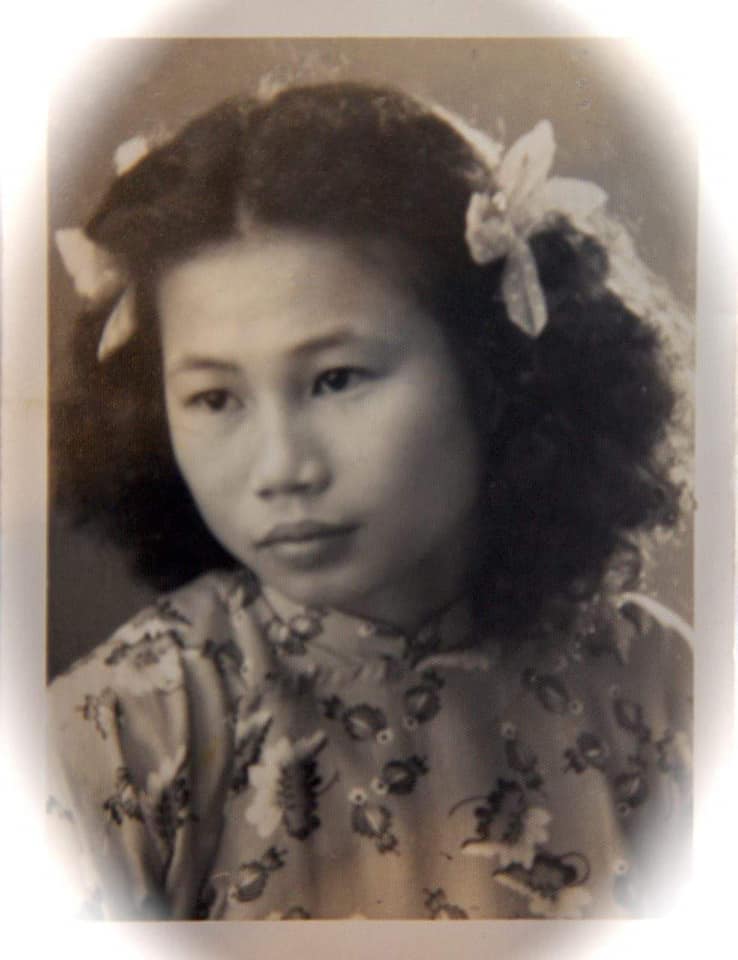
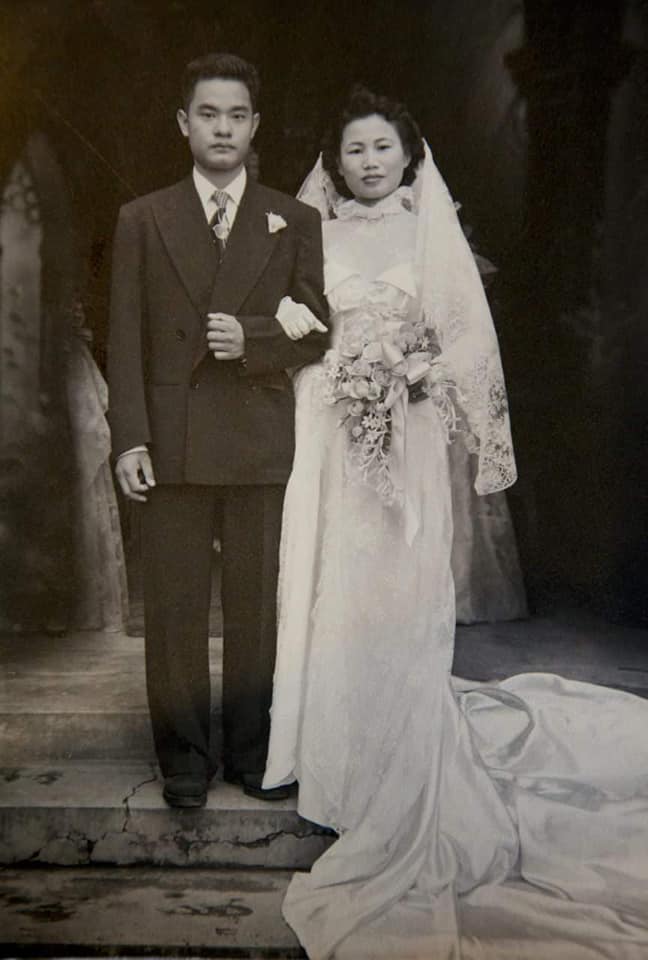
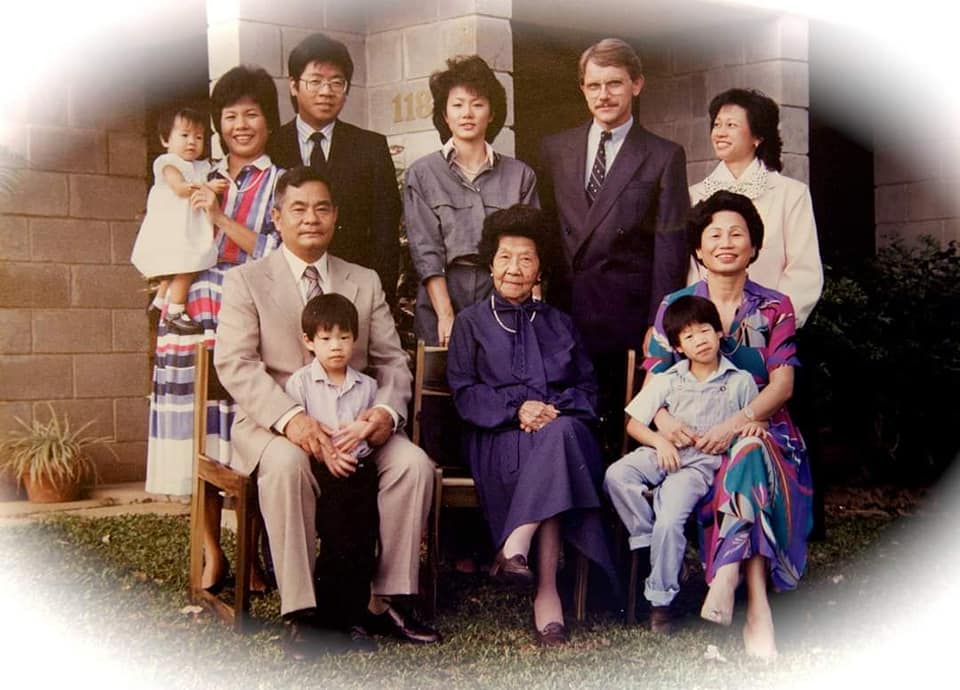
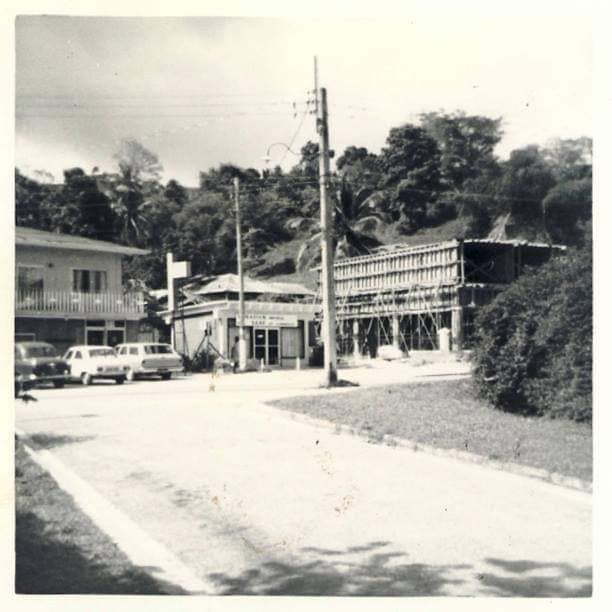


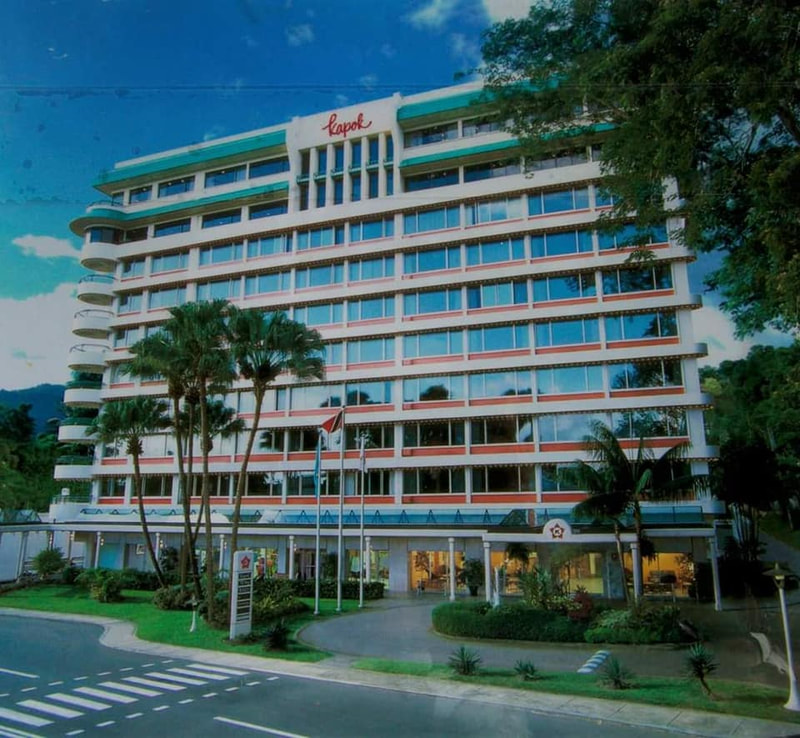




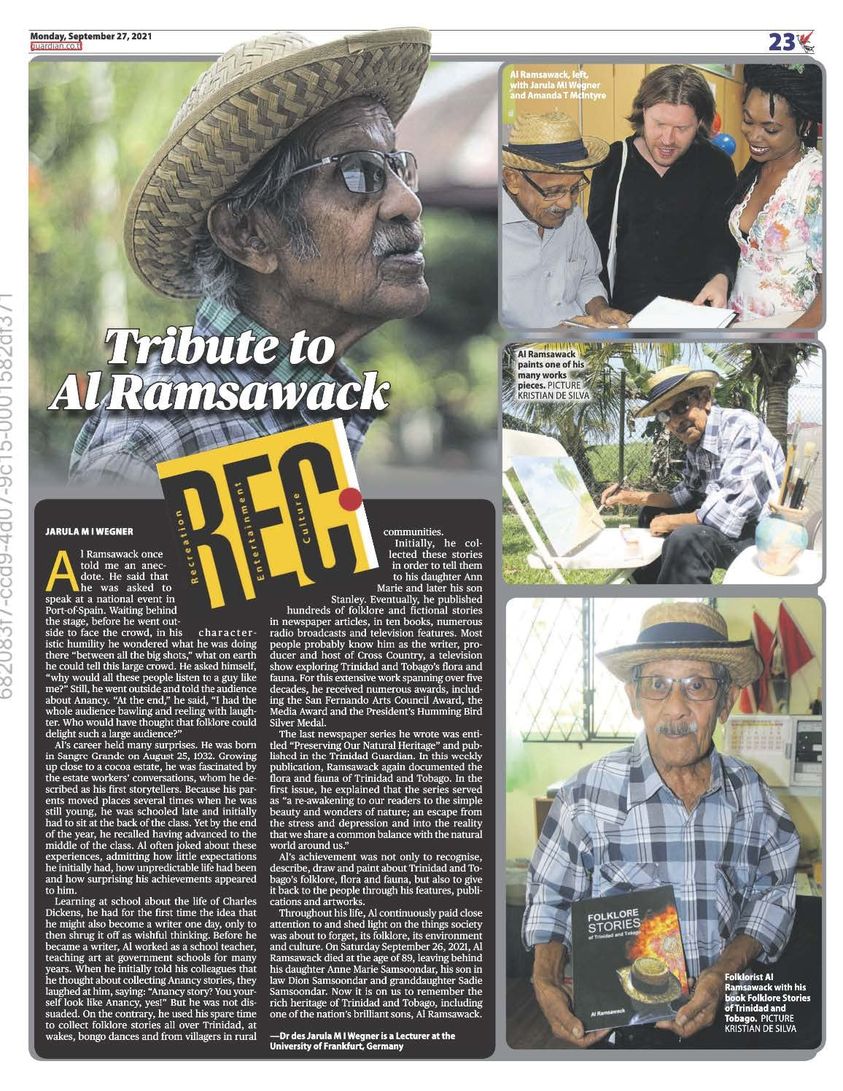
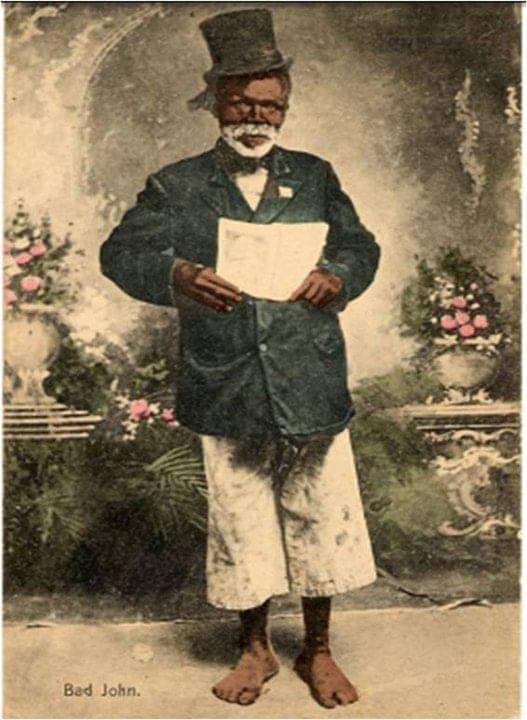








 RSS Feed
RSS Feed